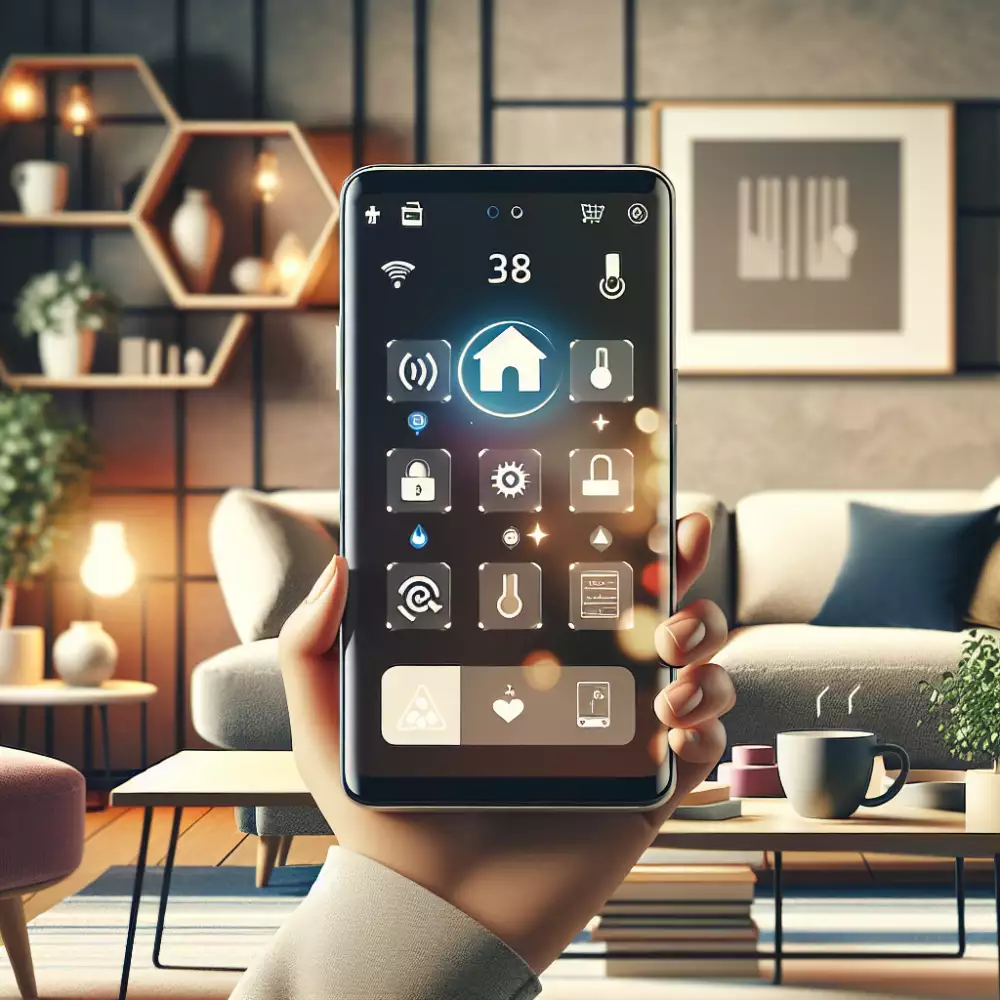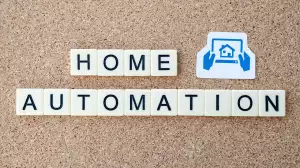Home App Revolution: Transforming Houses into Smart Homes

Home app basics
The Home app acts as a central hub for managing your HomeKit-compatible devices, including smart lights, thermostats, locks, cameras, sensors, and more.
Effortless Control and Automation
Control individual devices or create scenes to control multiple accessories simultaneously. For instance, a "Good Morning" scene could turn on your lights, adjust the thermostat, and start your coffee maker.
Organized Home Management
Create different rooms in the app to match your home's layout, assigning accessories to specific rooms for easy control. View the status of all your devices at a glance.
Powerful Automations
Set up triggers based on time of day, your location, sensor readings, or the status of other devices. This enables powerful automations, such as automatically turning on lights at sunset or adjusting the thermostat when you arrive home.
Shared Access and Siri Integration
Share control with family members and guests, granting different levels of access. The Home app also integrates seamlessly with Siri, allowing you to control your devices, set scenes, and check the status of your home using voice commands.
Smart home integration
Smart home integration brings all your smart devices together, allowing them to work in harmony. Instead of controlling your lights, thermostat, and security system separately, you can manage them all from a single app, like a home app. Imagine waking up in the morning and with a single voice command, or a tap on your phone, your blinds automatically open, the coffee machine starts brewing, and the thermostat adjusts to your preferred temperature. That's the power of smart home integration.
What is a Home App?
A home app acts as the central nervous system of your smart home. It connects to various devices and appliances, regardless of their brand, using different communication protocols like Wi-Fi, Bluetooth, and Zigbee. This interoperability is key to a seamless smart home experience.
Benefits of Smart Home Integration
The benefits of smart home integration extend beyond convenience. By automating tasks and optimizing energy usage, you can save money on your utility bills. For example, you can set your lights to turn off automatically when you leave the house or adjust your thermostat based on your schedule to avoid heating or cooling an empty home.
Furthermore, a well-integrated smart home enhances security. You can receive real-time notifications on your phone if your security cameras detect unusual activity or if a door or window sensor is triggered. Some systems even allow you to remotely lock or unlock doors and arm or disarm your security system.
Choosing the Right Home App
Choosing the right home app is crucial for a successful smart home experience. Consider factors like compatibility with your existing devices, ease of use, customization options, and privacy and security features. With the right home app, you can unlock the full potential of your smart home and enjoy a more comfortable, convenient, and secure living environment.
Security and monitoring
Security and monitoring are paramount for any smart home system. Your home app should provide robust features to give you peace of mind and control over your home's safety, even when you're away. Look for features like:
- Real-time monitoring: Access live video feeds from your security cameras directly within the app.
- Motion detection and alerts: Receive instant notifications on your smartphone or tablet whenever unusual activity is detected.
- Two-factor authentication: Add an extra layer of security to your account by requiring a unique code from your phone in addition to your password.
- Secure communication protocols: Ensure that the communication between your app, devices, and the cloud is encrypted and protected from unauthorized access.
- Activity logs: Review a history of events, such as door openings, motion detected, or alarm triggers, to stay informed about what's happening at home.
- Integration with security systems: Connect your home app with professional security systems for enhanced protection and monitoring.
- Remote access control: Arm or disarm your security system, lock or unlock doors, and control other security devices remotely through the app.
- Customizable settings: Tailor the sensitivity of motion detectors, set specific times for alerts, and create different security modes for various scenarios.
By carefully considering these security and monitoring aspects, you can create a smart home environment that is both convenient and secure. Remember to choose reputable brands, keep your app and device software up to date, and follow best practices for strong passwords and network security.
Energy management features
Energy management is quickly becoming a must-have feature for any smart home app. With energy costs on the rise, homeowners are looking for ways to save money and reduce their environmental impact. A good home management app can provide you with the tools you need to take control of your energy consumption.
One of the most important features of an energy management system is real-time monitoring. Your app should allow you to see how much energy you are using at any given time. This information can help you identify energy hogs and make changes to your habits. For example, you might be surprised to learn how much energy your home office uses even when you're not in it.
Another useful feature is the ability to set schedules for your smart devices. For instance, you can program your smart thermostat to automatically adjust the temperature when you are away from home or sleeping. This can save you money on your energy bill without sacrificing your comfort. Some apps can even learn your habits and preferences over time, automatically adjusting settings to optimize energy usage.
Many energy management systems offer insights and reports based on your energy usage data. These reports can show you your daily, weekly, and monthly energy consumption, making it easier to track your progress and identify areas for improvement. Some apps may even provide personalized recommendations on how to reduce your energy consumption further.
Integration with other smart home devices is another key feature of a comprehensive energy management system. Your app should seamlessly connect with other smart devices in your home, such as smart plugs, smart lights, and smart appliances. This allows you to control and monitor all of your devices from a central location, maximizing energy savings and convenience.
Finally, look for an app that offers features like energy usage comparisons and personalized goals. Comparing your energy usage to similar households can motivate you to make changes and compete for the lowest consumption. Setting personalized goals within the app can help you stay on track and make steady progress toward your energy-saving objectives.
Appliance control options
There are many ways to control your home appliances with a home app. The most common way is through a direct Wi-Fi connection. This allows you to control your appliances from anywhere in the world with an internet connection. Some home apps also offer Bluetooth connectivity. This is a good option if you want to control your appliances from a short distance, such as when you are at home. However, you will not be able to control your appliances from outside your home if you are using Bluetooth.
Many home apps work with voice assistants, such as Amazon Alexa and Google Assistant. This allows you to control your appliances with your voice. For example, you can say, "Alexa, turn on the lights" or "Hey Google, set the thermostat to 72 degrees." Some home apps also offer support for IFTTT (If This Then That). IFTTT is a service that allows you to connect different apps and devices together. This allows you to create recipes, which are automated tasks that are triggered by certain events. For example, you could create a recipe that turns on your lights when you arrive home from work.
When choosing a home app, it is important to consider your needs and preferences. Some factors to consider include:
• The types of appliances you want to control
• Your budget
• Your level of technical expertise
Once you have considered these factors, you can start narrowing down your options. There are many great home apps available, so you are sure to find one that meets your needs.
There are many ways to control your home appliances with a home app. The most common way is through a direct Wi-Fi connection. This allows you to control your appliances from anywhere in the world with an internet connection. Some home apps also offer Bluetooth connectivity. This is a good option if you want to control your appliances from a short distance, such as when you are at home. However, you will not be able to control your appliances from outside your home if you are using Bluetooth.
Many home apps work with voice assistants, such as Amazon Alexa and Google Assistant. This allows you to control your appliances with your voice. For example, you can say, "Alexa, turn on the lights" or "Hey Google, set the thermostat to 72 degrees." Some home apps also offer support for IFTTT (If This Then That). IFTTT is a service that allows you to connect different apps and devices together. This allows you to create recipes, which are automated tasks that are triggered by certain events. For example, you could create a recipe that turns on your lights when you arrive home from work.
When choosing a home app, it is important to consider your needs and preferences. Some factors to consider include:
• The types of appliances you want to control
• Your budget
• Your level of technical expertise
Once you have considered these factors, you can start narrowing down your options. There are many great home apps available, so you are sure to find one that meets your needs.
Lighting and temperature
Lighting and temperature are two of the most important factors in creating a comfortable and inviting home environment. With the right smart home app, you can easily control both of these elements from your smartphone or tablet.
Imagine being able to adjust your home's temperature before you even arrive. With a smart thermostat, you can do just that. Simply set a schedule or use the app to manually adjust the temperature from anywhere. This can help you save energy and money on your heating and cooling bills.
Smart lighting can also enhance your home's comfort and ambiance. You can use the app to turn lights on and off, dim them to the perfect brightness, or even create custom lighting scenes for different activities. For example, you could create a "movie night" scene that dims the lights and turns on your TV.
In addition to comfort and convenience, smart lighting and temperature control can also provide peace of mind. If you're away from home, you can use the app to check on your thermostat and lights. You can also set up alerts to notify you of any unusual activity, such as a sudden drop in temperature or a light being turned on unexpectedly.
Overall, a smart home app can give you a new level of control over your home's lighting and temperature. This can lead to a more comfortable, convenient, and energy-efficient living environment.
Entertainment system links
Our Home App goes beyond basic appliance control. It acts as the central hub for your entertainment setup. Easily link your streaming services like Netflix, Spotify, or Apple Music. Once linked, control playback directly through the app or use voice commands for a truly hands-free experience. Imagine starting your favorite playlist on Spotify as you walk in the door, all without lifting a finger.
But it doesn't stop there. The Home App integrates seamlessly with compatible smart TVs and speakers. Adjust volume, switch inputs, or power on your entertainment system right from the app. Hosting a movie night? Create a custom "Movie Mode" scene that dims the lights, lowers the blinds, and fires up your streaming service of choice on the big screen.
Voice assistant compatibility
One of the best parts of having a smart home is controlling it with your voice. No more fumbling for your phone – just ask, and it shall be done (well, hopefully). But before you can start barking orders at your house, you need to make sure your home app plays nicely with your favorite voice assistant.
The most popular options are Amazon Alexa and Google Assistant, but Apple HomeKit and Samsung Bixby are also in the mix. Check which assistants your home app supports. Some apps play well with all the major players, while others are more limited.
Once you've confirmed compatibility, you'll need to link your accounts. This usually involves opening your home app's settings and finding the "Integrations" or "Voice Assistants" section. You'll then be guided through the process of signing into your chosen assistant's account and granting the necessary permissions.
With everything connected, you can start controlling your home with voice commands. The exact commands will vary depending on your app and devices, but you can generally expect to do things like:
Turning lights on and off
Adjusting the thermostat
Locking and unlocking doors
Arming and disarming your security system
Playing music and podcasts
Voice control can make managing your home more convenient and accessible, especially for users who might have difficulty using a traditional touchscreen interface.
Benefits of home apps
Home apps are transforming the way we manage our living spaces, offering a range of benefits that simplify daily tasks and enhance our lifestyles.
One significant advantage is increased convenience. With a few taps on your smartphone, you can control various aspects of your home, from adjusting the thermostat to turning off lights, even when you're not there. This level of remote control provides peace of mind and allows for greater flexibility in managing your home.
Home apps also promote energy efficiency. By monitoring energy consumption patterns, these apps can suggest optimal settings for your devices, reducing unnecessary energy usage and lowering utility bills. Some apps even allow you to automate energy-saving actions, such as turning off lights when a room is empty.
Enhanced security is another compelling benefit. Many home apps integrate with smart security systems, enabling you to monitor security cameras, receive real-time alerts, and control locks remotely. This provides an added layer of protection for your home and loved ones.
Moreover, home apps offer improved appliance management. By connecting your appliances to the app, you can receive maintenance reminders, troubleshoot issues, and even control their functionality remotely. This proactive approach can extend the lifespan of your appliances and prevent costly breakdowns.
Finally, home apps contribute to a more comfortable and personalized living environment. You can create customized scenes that adjust lighting, temperature, and entertainment settings to your preferences. Whether you're relaxing at home or hosting guests, these apps allow you to set the perfect ambiance with ease.
Choosing the right app
With so many home management apps available, finding the perfect fit for your needs can feel overwhelming. Start by identifying your priorities. Are you looking to streamline chores, improve energy efficiency, or enhance home security? Once you know your goals, explore apps that specialize in those areas.
Read user reviews and compare features to find an app that aligns with your lifestyle and tech comfort level. Consider factors like ease of use, device compatibility, and integration with other smart home devices you already own. Some apps excel at task management and family communication, while others shine in home automation and security monitoring.
Don't be afraid to try out a few different apps before committing. Many offer free trials or basic versions, allowing you to test their features and interface. Ultimately, the right app will seamlessly integrate into your routine, simplifying your life and making managing your home a breeze.
Privacy and security concerns
Connecting your home devices and appliances to a central app can offer convenience and control, but it also raises valid privacy and security concerns. These apps often collect significant amounts of data about your daily routines and habits, such as when you're home, what you watch, and even your sleeping patterns. This data, if not properly secured, could be vulnerable to hackers or data breaches, potentially putting your personal information at risk.
Moreover, many home management apps rely on third-party integrations with other services and devices. While this can enhance functionality, it also expands the potential attack surface. Each connected service represents another point where your data could be compromised. It's crucial to carefully review the privacy policies and security practices of both the home app and any third-party integrations it uses.
Additionally, consider the potential for unauthorized access to your home devices. If your home app or network is not properly secured, hackers could gain control of connected devices like smart locks, cameras, or even appliances. This could have serious implications for your physical safety and security. Therefore, it's essential to choose a reputable home app with strong security features like two-factor authentication and end-to-end encryption. Regularly updating the app and all connected devices is also crucial to patch vulnerabilities and mitigate risks.
Future of home automation
The future of home automation is intricately linked with the evolution of home apps. As technology advances, we can expect to see even more seamless integration and intuitive control over our living spaces. Imagine a home app that learns your preferences and anticipates your needs. Picture an app that automatically adjusts the lighting, temperature, and even music based on your daily routines and preferences. This level of personalization will be driven by advancements in artificial intelligence and machine learning. Your home app will become more than just a control center; it will be your personalized home manager.
Voice control will continue to play a pivotal role in the future of home automation. Speaking commands to your home app will become second nature, allowing you to effortlessly control various aspects of your home. As natural language processing improves, your interactions with your home app will become more conversational and intuitive. Imagine simply saying, "Prepare the house for movie night," and your home app will dim the lights, lower the blinds, and even start your favorite streaming service.
The future of home automation also holds exciting possibilities for energy efficiency and sustainability. Your home app will be able to monitor your energy consumption patterns and provide insights into how you can reduce your carbon footprint. Smart homes will become more adept at optimizing energy usage, automatically adjusting settings based on factors like occupancy and time of day. This focus on sustainability will not only benefit the environment but also lead to cost savings for homeowners.
Publikováno: 23. 06. 2024
Kategorie: Technology



